#Philippine-American War
Text
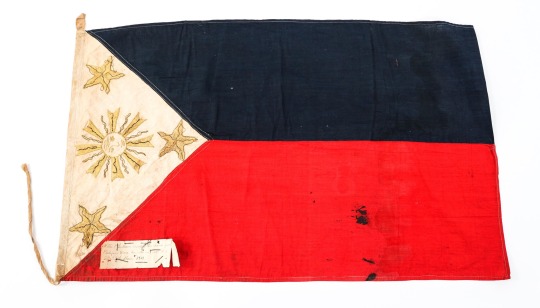

An early Philippine flag dated to the Philippine-American War. (Source)
279 notes
·
View notes
Note
Hi, I want to ask if you have any topics about the Philippine-American War? I have gotten myself in Philippine History and I want to know deeper. Thanks:)
I was thinking of many ways on how to answer this because this is such a large and complicated topic but I could just try to summarize some stuff here and tell you what I know and what I could find.
The Filipino-American war mainly started as Filipinos felt betrayed by their former American allies after the country was sold to them by Spain after the Spanish-American war during the Treaty of Paris of 1898 for $20 million alongside other Spanish colonies like Puerto Rico, Guam, and Cuba (American Historical Association, n.d.). This feeling of betrayal had come from the fact that the leader and dictator president of the Filipino revolutionaries, Emilio Aguinaldo of the Kataastaasang Kagalang-galang Katipunan ng mga Anak ng Bayan (en. The Supreme and Honorable Association of the Children of the Nation) or the Katipunan for short, actually sought assistance from the Americans in Hong Kong during the Filipino Revolutionary War against Spain which was happening at the same time (Kedmey, 2013). This is why tensions were so high with the Americans when they first formally colonized the Philippines.
Interestingly, the purchase also included some territories that weren't actually part of Spanish rule such as the Sultanate of Sulu as well as some indigenous territories which led to a strained relationship with the Americans moving forward such as the independent Moros of Muslim Mindanao later being forced to assimilate to the rest of the colony of the Philippines despite previous agreements that state that they will leave them alone, mirroring the way the United States government treated Native Americans (Gowing, 1968).
Fighting between the American army and the Filipino army first broke out when on February 4, 1899 after Private William W. Grayson fired at 4 Filipino soldiers who cocked their rifles in response to them ordering the men to halt which later broke out into the Battle of Manile of 1899 (Chaput, 2012). As the Filipinos and Americans declared war on each other, the Katipuneros resorted to the mountains to start guerilla warfare against the American army (Philippine-American War, n.d.) which then lasted until 1901 when Aguinaldo was captured on March 23, 1901, just a day after Aguinaldo's birthday actually with the capture being attributed to two of his men, Lazaro Segovia and Hilario Tal Placido who betrayed him to the Americans with his other men still being too relaxed from the festivities the day before (Ocampo, 2010).
The fighting continued despite his capture and surrender until the last of the generals, General Macario Sakay, surrendered in July 14, 1906 who was then later executed along side his men on September 13, 1907 despite the initial promise of amnesty by the American government (Pangilinan & Pimintel, 2008).
The war ended the lives of 4,300 American soldiers with only 1,500 having been killed in action with the rest succumbing to diseases, while Filipino forces suffered 20,000 casualties alongside the death of 200,000 Filipino civilians due to hunger, disease, and combat (Philippine-American War, n.d.).
The violence of the situation and especially committed by the American soldiers prompted a lot of protests in the United States to stop the war immediately, as letters of the situation had been sent back to their homes which describes in excruciating detail the war crimes that these soldiers were ordered to commit such as blockading and burning down villages, extreme torture of captured and suspected enemies, and much more. The most well-known of these torture methods that I remember being taught to us in history classes as early as 4th grade was the "Water Cure" where American soldiers would force water down the victim's throat in and force them to vomit it back out. This article has a detailed account of the exact nature of this torture method as it discusses the torture of Mayor Joveniano Ealdama of Igbaras, who, although no American troop was actually hurt in his town, was tortured with his town being burnt down by the Americans the very next day (Vestal, 2017).
I do have to be honest, I was utterly shocked at how little Americans really knew about the Philippine American colonial era and by extension the Philippine-American war especially with the sheer amount of brutality the Americans had done to Filipino locals as well as the large impact the American government and American culture has had in my country and I am glad that more and more people are starting to learn more about this but it's still rather disappointing.
Videos on the Philippine-American War
If you want to learn more about the Philippine-American War, I have a couple of recommendations for videos that you can watch.
This video by Crash Course explains the origins of American Imperial idealization as well as the wars that led up to the colonization of the many territories that America acquired during this time era:
youtube
Here's a good summary by history teacher Mr. Beat of the major aspects of the war as well as the American public's perception of it that you can watch:
youtube
Here's a video made with a Filipino-perspective by Jonas Tayaban on the topic:
youtube
Here's a summary in Tagalog. It doesn't have English subtitles though but it does detail more things about the build-up and the subsequent wars between Spain and America and later the Philippines and Spain and then America too:
youtube
Movies about the Philippine-American War
I would also be remiss to not suggest some historical movies that tackle the events of this time period and especially TBA Studios' Artikulo Uno films Heneral Luna (2015) which focuses on the most popular and effective general of the revolution Gen. Antonio Luna, and Goyo: Ang Batang Heneral (2018) which focuses on Gregorio "Goyo" del Pilar, one the youngest generals of Filipino history who died a very tragic death at a young age:
youtube
You can watch the full movie here complete with English Subtitles
youtube
Another well-known movie about this time period is Viva Films' El Presidente (2012), although I had heard people say it's very much biased to the controversial dictator president Aguinaldo's side with many people citing that as the reason why they don't like the film.
youtube
Here's a reupload of the full-movie. It doesn't have subtitles though.
I don't know of any American-made movies that focuses on this topic and I know there's several other films that focus more on the politics of the Katipunan and the Filipino Revolutionary War against Spain, but not necessarily the Philippine-American War so if anyone has other suggestions, please let me know.
I would also like to suggest documentaries but most of the ones I've seen are on World War II and the others are other YouTube videos by history channels that I'm not too familiar with made by mostly white American YouTubers. Not that that would disqualify their videos (I did reference both John Green and Mr. Beat here) but I don't know these history channels and their hosts enough to recommend them in good faith as of right now.
Books and Further Reading on the Philippine-American War
For books on the subject, I often reference the many writings of Ambeth Ocampo such as his Looking Back series, specifically:
Looking Back 2: Dirty Dancing (Shopee, Lazada, Amazon)
Looking Back 11: Independence x6 (Shopee, Lazada)
Looking Back 13: Guns of the Katipunan (Shopee, Lazada)
I'm also currently interested in buying some other books about the topic like The Hills of Sampaloc: The Opening Actions of the Philippine-American War, February 4-5, 1899 (Shopee, Amazon) but I don't really have any extra money to spare for it right now.
I remember that my father had some other books about this too but the names had escaped me and it's far too much work to try to sort out through his entire book pile in our house.
I hope this answer's comprehensive enough since the subject is, as I said before, quite complex and rather large so I can't really get into all the specifics right now.
References:
American Historical Association. (n.d.). How Did America Enter the Picture?. Retrieved on 3 February 2024, from https://www.historians.org/about-aha-and-membership/aha-history-and-archives/gi-roundtable-series/pamphlets/em-24-what-lies-ahead-for-the-philippines-(1945)/how-did-america-enter-the-picture
Chaput, D. (2012). Private William W Grayson's War in the Philippines, 1899. Retrieved on 3 February 2024, from https://ne-test-site8.cdc.nicusa.com/sites/ne-test-site8.cdc.nicusa.com/files/doc/publications/NH1980GraysonWar1899.pdf
Gowing, P. (1968). Muslim-American Relations in the Philippines, 1899-1929. Retrieved on 3 February 2024, from https://asj.upd.edu.ph/mediabox/archive/ASJ-06-03-1968/gowing-muslim-american%20relations%20in%20the%20philippines%201899-1920.pdf
Kedmey, D. (2013, June 13). Exiled in Hong Kong: Famous Company for Edward Snowden.Time. Retrieved on 3 February 2024, from https://world.time.com/2013/06/15/exiled-in-hong-kong-famous-company-for-edward-snowden/slide/general-emilio-aguinaldo/
Ocampo, A. (2010). Looking Back 2: Dirty Dancing. Anvil Publishing
Pangilinan, F., & Pimintel, A. (2008, September 9). A Resolution Expressing the Sense of the Senate Honoring the Sacrifice of Macario Sakay and all other Filipinos who Gave Up their Lives in the Philippine-American War for our Freedom, Senate Resolution No. 623, 14th Congress of the Republic of the Philippines. Retrieved on 3 February 2024, from http://legacy.senate.gov.ph/lisdata/83927584!.pdf
Philippine-American War. In Britannica. Retrieved on 3 February 2024, from https://www.britannica.com/event/Philippine-American-War
Vestal, A. (2017). The First Wartime Water Torture by Americans. Retrieved on 3 February 2024, from https://digitalcommons.mainelaw.maine.edu/mlr/vol69/iss1/2/
#filipinfodump#filipino history#american history#history#filipino-american history#philippine-american war#military history#colonial history#imperialism#american imperialism#american colonization#american colonial era#philippines#america#filipino#katipunan#us military#president emilio aguinaldo#general antonio luna#general gregorio del pilar#filipino heroes#filipino presidents#john green#crash course history#crash course american history#mr. beat#jonas tayaban#moobly tv#filipino movies#heneral luna (2015)
80 notes
·
View notes
Text
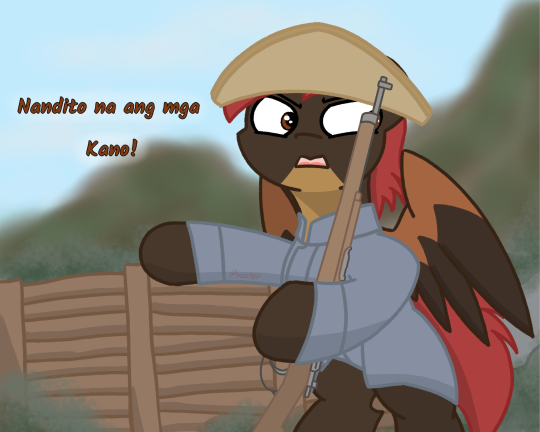
Battle of Tirad Pass - Philippine-American War
December 2, 1899
On this day, a small contingent from Filipino General Gregorio Del Pilar's brigade make their last stand at Tirad Pass.
In an attempt to halt the advance of American forces and enable Philippine President Emilio Aguinaldo to escape capture, Del Pilar and 60 members of his brigade fortify Tirad Pass. In the battle that ensued, his force managed to delay the troops of the American 33rd Volunteer Infantry Regiment.
However, after a secret trail around the Filipino defenses was found, American sharpshooters were able to positions themselves above the Filipino trenches and slowly pick-off the defenders. Among the dead was General Del Pilar himself.
#Art#Random Art#Rooster#MLP#My Little Pony#MLP Art#My Little Pony Art#Pegasus#History#Philippine History#Philippine-American War#On this day#Battle of Tirad Pass
16 notes
·
View notes
Text
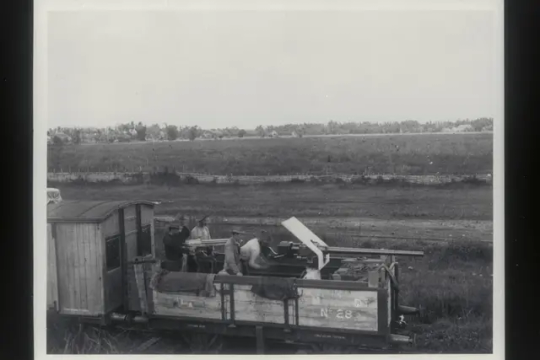
Naval guns on railway car, during the Philippine-American War near Manila-Dagupan, 1899
14 notes
·
View notes
Text
Filipino Nationalism
The Roots and Origin of Filipino Nationalism
The advent of Filipino nationalism began in the late 19th century. It sprouted as a response to three centuries of Spanish colonial rule marked by oppression and inequality. Over time, Filipinos formed an identity and became more united as they shared a cultural heritage. Today, we recognize this as the birthplace of Filipino nationalism.
Although the…
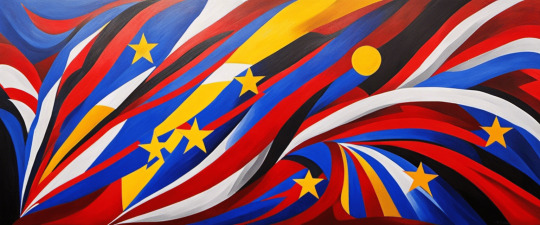
View On WordPress
0 notes
Text
Black troops in Vietnam famously questioned why they should fight for a country that hated them. So did Black troops in the Philippines:
One of the blunt questions they had was why they were expected to fight for people who hated them against people who were called the same slurs they were. Most of the soldiers who asked the question found means to satisfy their conscience. Some did not. The Philippine-American War itself is one of history's forgotten wars, the more sharply ironically in that it was the one Asian insurgency the USA actually won and the one War of National Liberation an Asian society fought against it and lost.
These were the realities of imperialism as it actually was. And they had plenty to ponder given that Generals Otis and MacArthur were quite keen to wage a brutal war of suppression and did so, and had no qualms about ordering the unleashing of atrocities to rival anything General Weyler did in Cuba.
#lightdancer comments on history#black history month#united states colored troops#philippine-american war#american imperialism
0 notes
Text

Platoon (1986, Oliver Stone)
24/03/2024
Platoon is a 1986 film, written and directed by Oliver Stone, which deals with his time in Vietnam as a volunteer during the war and is inspired by the real experiences the director had between 1967 and 1971 during his military service.
The film won 4 Oscars out of 8 nominations and Oliver Stone was also awarded the Silver Bear in Berlin as best director. In 1998 the American Film Institute placed it in eighty-third place in the ranking of the one hundred best American films of all time, while ten years later, in the updated list, it dropped to eighty-sixth place. In 2019, it was chosen for preservation in the National Film Registry of the United States Library of Congress.
The bloodiest episode, as in many other films dealing with the Vietnam War, is inspired by the most atrocious event of that conflict, known to history as the My Lai massacre, in which American soldiers committed atrocities including rape of very young girls, indiscriminate killings of innocent civilians, destruction of the homes and resources of the inhabitants, believed to be allies of the Viet Cong, despite there being no evidence. From this perspective, the figure of the platoon commander, Lieutenant Wolfe, both for his inability to control his men and for other characteristics, can be traced back to the main person responsible for My Lai, the then US Army Lieutenant William Calley, convicted to several years of military detention for that very affair.
Due to an error by Lieutenant Wolfe, who gives wrong coordinates via radio, the platoon is decimated by friendly artillery.
In the last war action of his volunteer service, Chris escapes a deadly ambush by the Viet Cong who almost completely annihilate the platoon and the subsequent American bombing with napalm.
Initially Hollywood snubs the script as many producers are of the opinion that what three is to say about the Vietnam War has already been reported in highly successful films such as Apocalypse Now and The Deer Hunter, however the strength of Stone's script still attracts some producers who see enormous potential in him. He was then assigned to write a screenplay for another film, Stone accepted and wrote Midnight Express in 1977, thanks to which he won the Oscar for best non-original screenplay (first statuette for Stone) a fact that made all of Hollywood understand the Stone's enormous potential; it was therefore not difficult for him to find the producer to begin work on Platoon.
The film was shot, following the great example of Apocalypse Now, director Francis Ford Coppola's masterpiece, on the island of Luzon, in the Philippines, starting in February 1986. The film's production was almost canceled due to the political upheavals in country, due to Ferdinand Marcos, dictator of the country. Upon arrival in the Philippines, the cast members underwent a two-week course of intensive training by Dale Dye (former Marine captain during the Vietnam War and interpreter of Captain Harris), during which they had to dig trenches and suffer forced marches and night "ambushes".
#platoon#film#1986#oliver stone#vietnam#vietnam war#1967#1971#academy awards#berlin international film festival#berlin#1998#american film institute#AFI's 100 Years 100 Movies#2019#national film registry#library of congress#united states#My Lai massacre#William Calley#friendly fire#Napalm#apocalypse now#the deer hunter#midnight express#Academy Award for Best Adapted Screenplay#francis ford coppola#luzon#philippines#ferdinand marcos
12 notes
·
View notes
Text
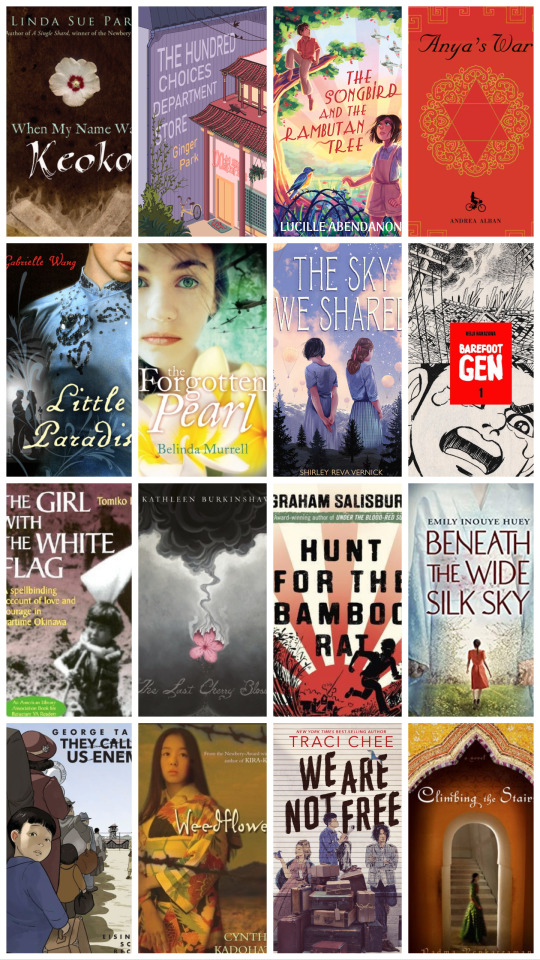
YA Pacific WW2 Books
Today marks the 78th anniversary of the bombing of Nagasaki, 3 days after the bombing of Hiroshima.
I've had a list of WW2 books in a file for a while. I noticed the Pacific side of the war is much less represented in fiction, but there are still many promising-looking books out there. These range from stories in Japan-occupied territories, to Jews in Shanghai, bombs in Australia, and stories of the atomic bombs in Japan and internment of Japanese-Americans.
Let me know if you've read any of these!
When My Name Was Keoko by Linda Sue Park (Korea)
The Hundred Choices Department Store by Ginger Park (Korea)
The Songbird and the Rambutan Tree by Lucille Abendanon (Indonesia) [releases in 2024]
Anya's War by Andrea Alban Gosline (China)
Little Paradise by Gabrielle Wang (Australia - China)
The Forgotten Pearl by Belinda Murrell (Australia)
The Sky We Shared by Shirley Reva Vernick (Japan - United States)
Barefoot Gen by Keiji Nakazawa (Japan) [manga]
The Girl with the White Flag Tomiko Higa, Dorothy Britton (Japan)
The Last Cherry Blossom by Kathleen Burkinshaw (Japan)
Hunt for the Bamboo Rat by Graham Salisbury (United States - Philippines) [more in the series]
Beneath the Wide Silk Sky by Emily Inouye Huey (Japanese-American)
They Called Us Enemy by George Takei (Japanese-American) [graphic novel]
Weedflower by Cynthia Kadohata (Japanese-American)
We Are Not Free - Traci Chee (Japanese-American)
Climbing the Stairs by Padma Venkatraman (India)
🕊️🕊️ Prayers for peace. 🕊️🕊️
#book list#ww2#historical fiction#booklr#japanese american#japan#korea#indonesia#china#australia#philippines#india#war#historical 20th century
22 notes
·
View notes
Text

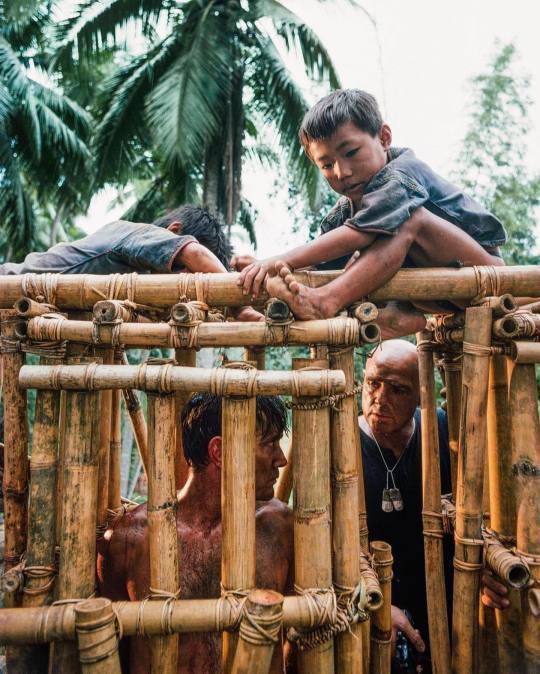

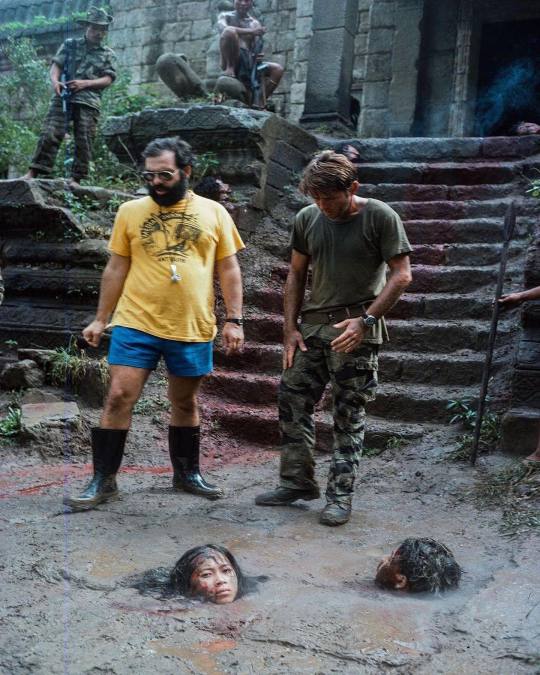
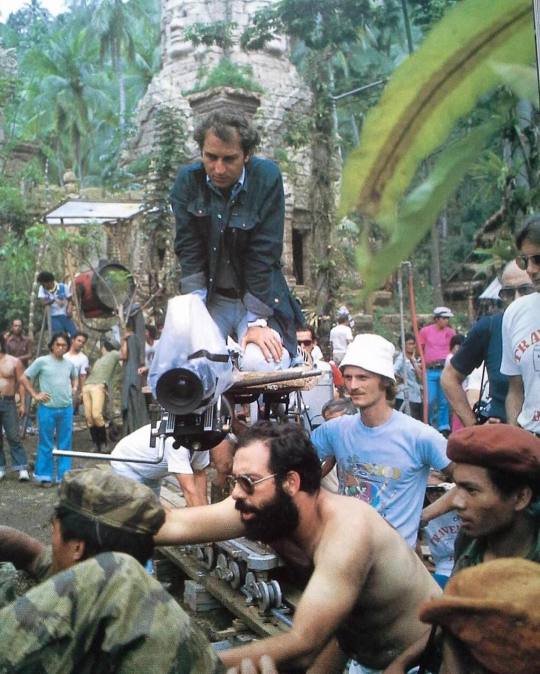
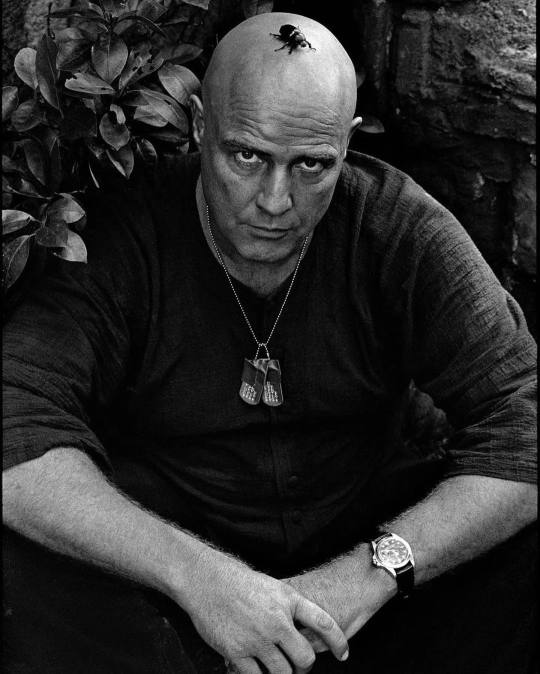
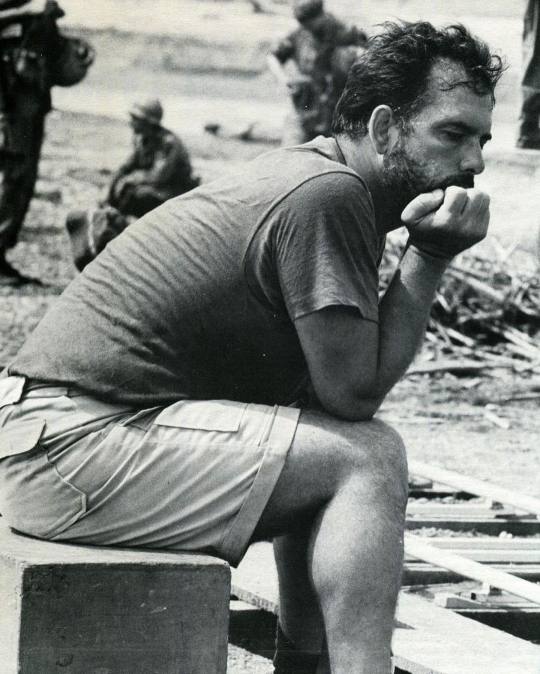

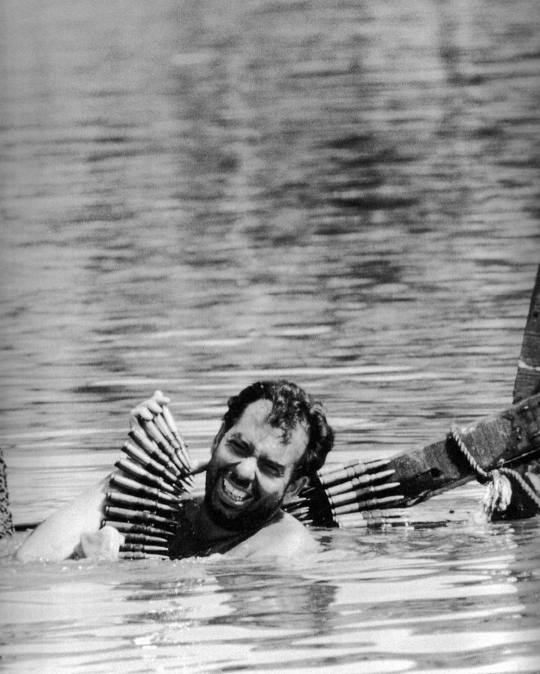
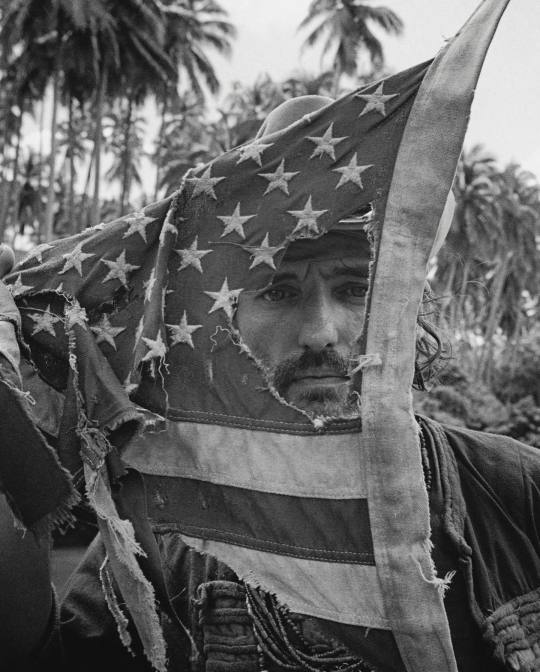
BTS of Apocalypse Now (1979) dir. Francis Ford Coppola
#apocalypse#apocalypse now#bts#1979#francis ford coppola#charlie sheen#marlon brando#vietnam#vietnam war#philippines#america#director#movies#american film#film set#actor#film photography#photography#art#black and white#u.s. army#anti war
10 notes
·
View notes
Text
I actually just read about the Bud Dajo Massacre for class, so. I don’t have to imagine some of it :|
#to say nothing of the gas chambers lol but at least I learned about nazi germany in the classroom#(unlike the philippine-american war!)
4 notes
·
View notes
Text
man american textbooks really hate using the word "colonization" in regards to their colonization of the philippines
#im just reading about a filipino church that schismed from the roman catholic church#and there's a blue highlight over 'american colonial period' and im like !!!#i read a textbook that verbally stepped around a lot of the philippine american war which was one of the first things that began to really#concretely politically affect me#so seeing it referred to as the american colonial period internally has me cheering#they do not like to say that! they will not say that on their own!#karinyo.txt#this is not an endorsement of the church i literally have no idea what they're about i'm just curious about like#filipino specific versions of catholicism#but yeah they schismed during american colonization
2 notes
·
View notes
Text
I ADORE GEN INFORMATION AND HISTORY STUFF SOOO MUCH ... and etc etc etc and and and :(( <3 god i love the plethora of information ik and. etc.
#⋯ ꒰ა starry thoughts ໒꒱ *·˚#hey guys wna know some random facts about the chinese dynasties and types of sharks and stoat fun facts#and the roman empire and everything about greek and roman and egyptian and norse mythology#even a bit of scandinavian mythology and hawaiian myths and philosophers like aristotle and his nicomachean ethics#and edgar allan poe's works as well as lois lowry and neil gaiman and shakespeare oh god shakespeare and the bible and christianity and#world history filipino history american and french and british revolutions and wars and history and the founding of the united states and#IDK OKAY i just reaaally love random information and HISTORY so goddamn much. i am such a nerd. i love being this geek that i am.#mythology in general is probably one of my biggest special interests though. oh my god.#RIGHT WAIT I REALLY LOVE ROCKS AS WELL AND i adore all subjects in school actually and and and. i love knowledge so much.#ASTRONOMYYYYYJRBWJGWSUGDJSBFKSBFK wait okay i'll be normal (lie) for a second again#mythology. it's insane i learned about hawaiian mythology in this minecraft server uhhh for this. yeah.#i miss that tbh! no longer into the fandom/book series for probably aha obvious reasons but it's nostalgic to me still#ANYWAY RIGHT BACK ON TRACK okay egyptian mythology and norse i rmbr i memorized some hieroglyphics and uhh runes? before#god bless rick riordan's books for starting my obsession with different kinds of mythologies tbh#yk one reason why my eyesight probably started sucking more was bcs i read so much of the mythology book by edith hamilton on a road trip#upwards to a norther part of the philippines and good gods it was a bumpy ride! i still remember that moment vividly though#and. i'm tired of typing now. goodbye.
5 notes
·
View notes
Text
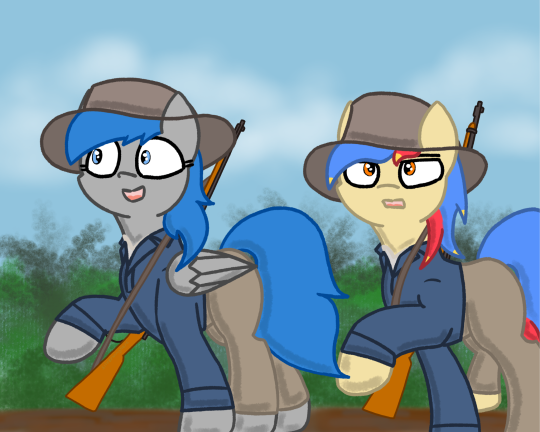
I was told that the lyrics to the song may be seen as offensive, so I'm posting this without the song XD
Featuring: @techbro-arts
----------------------------------------
Like my art? Consider supporting me on Ko-fi! :3
#Art#Random Art#Silver Wing#techbro-arts#MLP#My Little Pony#MLP OC#Pegasus#Earth Pony#History#Philippine History#Philippine-American War#I'll probably post the one with the lyrics on Discord
20 notes
·
View notes
Text
Happy Independence Day!
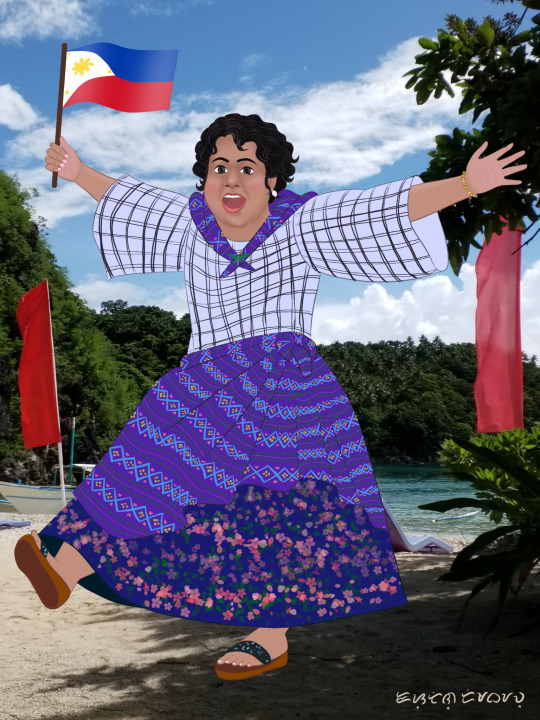
This is me holding the Philippine flag and wearing an ensemble called baro't saya (literally blouse and skirt) based on items I actually own. The background is a photograph I took of a beach in Caramoan, off the coast of the Bicol peninsula.
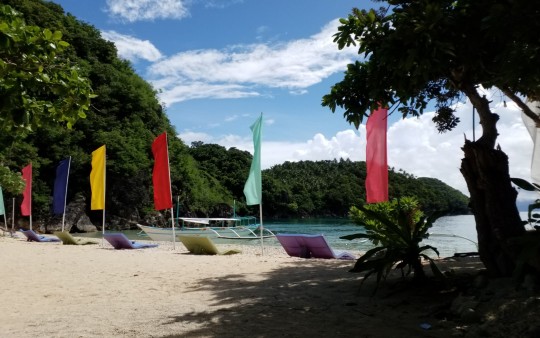
On June 12, 1898, the Philippine national flag was revealed for the first time and accompanied by the melody of what would become the national anthem.
youtube
#philippine independence day#June 12 1898#lupang hinirang#self portrait#face reveal#not really#but close enough#digital art#medibangpaint#medibang art#medibang paint#artstreet medibang#medibang#philippine revolution#philippine american war#philippine history#philippine culture#baro't saya#Philippine national anthem#Philippine flag#Youtube#aeshna's art#araw ng kasarinlan
4 notes
·
View notes
Text
Balangiga Massacre
Origin of the Conflict
The Balangiga Massacre happened during the Filipino-American war. It occurred in the final phase of the conflict, between 1901 and 1902. Filipinos resisted American rule, with revolts happening all over the islands. One such uprising took place in Balangiga, a small town on the southern coast of Samar Island.
In a strategic move, the U.S. military established a garrison in…

View On WordPress
0 notes